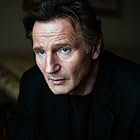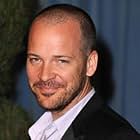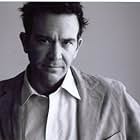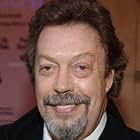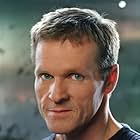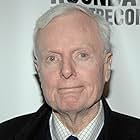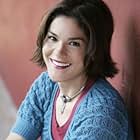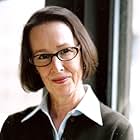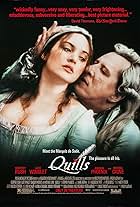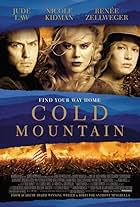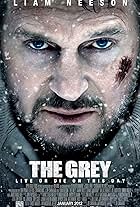A look at the life of Alfred Kinsey, a pioneer in the area of human sexuality research, whose 1948 publication "Sexual Behavior in the Human Male" was one of the first recorded works that sa... Read allA look at the life of Alfred Kinsey, a pioneer in the area of human sexuality research, whose 1948 publication "Sexual Behavior in the Human Male" was one of the first recorded works that saw science address sexual behavior.A look at the life of Alfred Kinsey, a pioneer in the area of human sexuality research, whose 1948 publication "Sexual Behavior in the Human Male" was one of the first recorded works that saw science address sexual behavior.
- Nominated for 1 Oscar
- 17 wins & 51 nominations total
- Director
- Writer
- All cast & crew
- Production, box office & more at IMDbPro
Storyline
Did you know
- TriviaOn the DVD commentary, writer and director Bill Condon revealed that he wanted to include, in a montage, a clip from I Love Lucy (1951), in which a character makes a joking reference to Dr. Alfred Kinsey's research. Condon says that he was unable to use the clip because Lucie Arnaz (the daughter of Lucille Ball and Desi Arnaz) denied him the rights, offering very little explanation, aside from claiming that her parents would never allow themselves to be associated with Kinsey.
- GoofsDuring the credits, the producers thank the "University of Indiana" when it is actually "Indiana University" of which Alfred Kinsey was a part. The university notified director Bill Condon of the mistake. Condon gave his word that it would be taken care of when the film went on general release, but the mistake remains.
- Quotes
Alfred Kinsey: [Kinsey is teaching his first class] Who can tell me which part of the human body can enlarge a hundred times. You, miss?
Female Student: [indignantly] I'm sure I don't know. And you've no right to ask me such a question in a mixed class.
Alfred Kinsey: [amused] I was referring to the pupil in your eye, young lady.
[class laughs]
Alfred Kinsey: And I think I should tell you, you're in for a terrible disappointment.
- Crazy creditsAt the end of the film (following the main cast credits), a montage featuring Kinsey Institute footage of the mating habits of various animals is accompanied by "Fever" by Little Willie John.
- SoundtracksEtudes, Opus 25
Written by Frédéric Chopin
Performed by Idil Biret
Courtesy of Naxos of North America, Inc.
This line from KINSEY is a great representation of the movie. It illustrates the film's offhanded sense of humor and shows that the otherwise taboo topic of sex is tossed about in a way that can be seen as being either casually shocking or mundanely trivial. And, logically enough, numerous scenes do happen at the dining table: sex researcher Alfred Kinsey, as played by Liam Neeson, chatters about sexual statistics over family backyard cookouts with his teenaged children, regales guests with graphic details of sexual minutiae at elegant affairs and ultimately ends up becoming a crashing bore at dinner parties as his compulsion to ramble on about all things sexual dominates his every conversation and waking thought.
What begins as a healthy interest and a professional curiosity becomes a tiresome obsession. In a way, Kinsey becomes a sex addict, but in a scholarly, detached sort of way. He's like a sports nut who's neither a player nor a spectator, but loves to collect the memorabilia and obsessively keep track of trivial statistics. He measures his sexual conquests less by the number of his bed partners than by how many people he seduces into answering his probing sex surveys. Research itself becomes a sexual fetish.
A disturbing, or at least revealing, aspect of the film is the implication that Kinsey seemed to blur the line separating the personal and professional in his pursuit of carnal knowledge. There is a scene where Kinsey and his assistant Clyde Martin (Peter Sarsgaard) go to a gay bar to round up people to interview and various men treat his request to answer questions as a joke, assuming that the survey is really a cheesy come on. And they might not be entirely wrong. Watching the film, one gets the feeling that Kinsey had a substantial sexual appetite, both physically and intellectually. The film suggests more than it reveals, but it hints that the lingering concerns over Kinsey's moral and ethical behavior might reflect more than just a germ of suspicion.
Though the film tries to memorialize Kinsey as a social pioneer, it doesn't shy away from (nor does it condemn) his dubious breaches of ethical standards, such as encouraging intramural sexual activities among his staff and their wives. At one point, Kinsey interviews a creepy subject played by William Sadler who has maintained a detailed record of all of the thousands of people he has had sex with (including children) and the implication is clear that he and Kinsey are two sides of the same coin -- both justifying their amoral pursuits in the name of intellectual enrichment.
Throughout the movie all things sexual are treated comically and seriously, trivially and ponderously, casually and obsessively. But only fleetingly is sex treated erotically. The film is graphic about sex, but in a textbook sort of way, not a pornographic way. Even the few sexual scenes involving Kinsey and his wife (Laura Linney) seem designed to illustrate an academic point, coming off as being more like classroom visual aids rather than moments of passion. The film delves into the good doctor's bisexuality, but gingerly treats it with equal reticence. Indeed, though a bit of full frontal nudity is supplied by Sarsgaard, he ends up putting his pajamas on before sharing an intimate kiss with Neeson. Perhaps the film's only moment of real sexual tension comes from two Boy Scouts discussing the sins of self gratification. (And they end up praying!)
The film is mostly all X-rated talk, with only a bit of PG-13 action. And the talk isn't even all that graphic, it just seems that way compared to the traditional -- skittish -- way films always approach the subject. If the film has any point it is that even though we have come a long way in dealing with sexuality, we still haven't gone all that far: political correctness having joined religious piety as a form of censorship. Kinsey worked to bring the most private of all human endeavors into public discourse, not realizing, or caring, that most people would still rather have it continue being -- literally -- private intercourse. As such, KINSEY still carries a certain shock value and the ability to milk much of its humor from its often embarrassingly blunt approach.
And humor may be the film's saving grace. Though, towards the end, the story takes on the usual air of self-importance that plagues most film biographies, writer-director Bill Condon refuses to let the film become too heavy-handed. Some of the humor is a bit obvious, such as picking John Lithgow to play Kinsey's pompous father, a fundamentalist preacher, in a performance that echoes the actor's similar role in FOOTLOOSE. But, for the most part the humor humanize the characters and doesn't present them as crusading icons or symbols of enlightenment. Like most film biographies, the honesty of KINSEY as history is debatable, as are the doctor's contribution to the health and welfare of the society. But as a film, KINSEY is like good sex, a briefly satisfying mix of passion and amusement.
- How long is Kinsey?Powered by Alexa
Details
- Release date
- Countries of origin
- Official site
- Language
- Also known as
- Kinsey: El científico del sexo
- Filming locations
- Production companies
- See more company credits at IMDbPro
Box office
- Budget
- $11,000,000 (estimated)
- Gross US & Canada
- $10,254,979
- Opening weekend US & Canada
- $169,038
- Nov 14, 2004
- Gross worldwide
- $17,050,017
- Runtime1 hour 58 minutes
- Color
- Sound mix
- Aspect ratio
- 2.35 : 1
Contribute to this page











